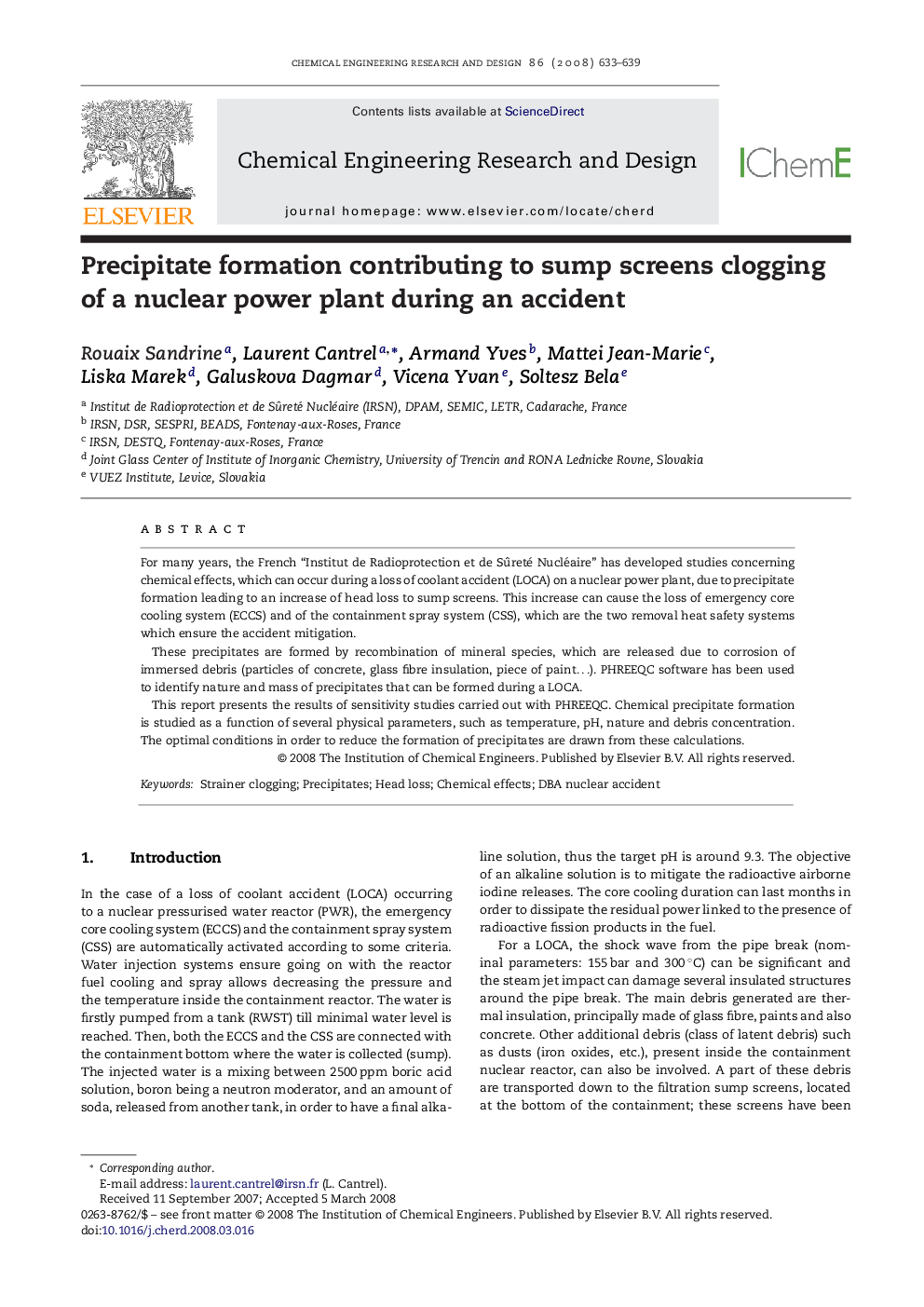| Article ID | Journal | Published Year | Pages | File Type |
|---|---|---|---|---|
| 622485 | Chemical Engineering Research and Design | 2008 | 7 Pages |
For many years, the French “Institut de Radioprotection et de Sûreté Nucléaire” has developed studies concerning chemical effects, which can occur during a loss of coolant accident (LOCA) on a nuclear power plant, due to precipitate formation leading to an increase of head loss to sump screens. This increase can cause the loss of emergency core cooling system (ECCS) and of the containment spray system (CSS), which are the two removal heat safety systems which ensure the accident mitigation.These precipitates are formed by recombination of mineral species, which are released due to corrosion of immersed debris (particles of concrete, glass fibre insulation, piece of paint…). PHREEQC software has been used to identify nature and mass of precipitates that can be formed during a LOCA.This report presents the results of sensitivity studies carried out with PHREEQC. Chemical precipitate formation is studied as a function of several physical parameters, such as temperature, pH, nature and debris concentration. The optimal conditions in order to reduce the formation of precipitates are drawn from these calculations.
